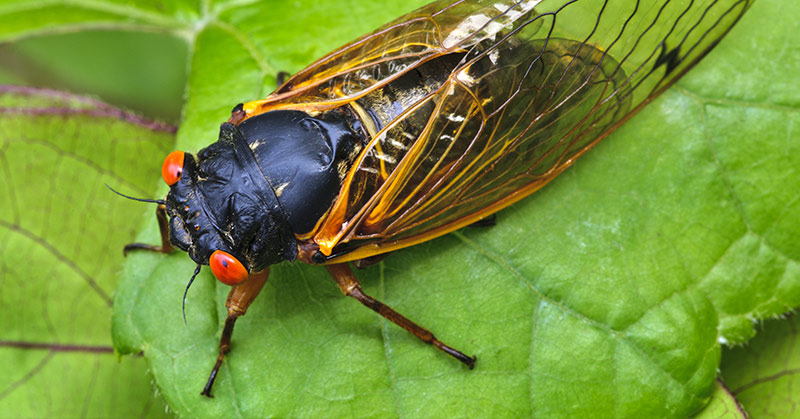As the warmer weather begins to settle in, we are all being met with the familiar signs of the season: the sound of lawnmowers, the smell of the neighbors’ barbecue, the feeling of a warm breeze against our skin, are all synonymous with summer.
There is one sound, however, that when you hear it you know for certain that summer has arrived: the buzzing sound of cicada bugs.
The Great Return
Experts are now saying that this summer we are going to be hearing a lot more than usual from these noisy bugs. As many as 1.5 million cicada bugs are going to be emerging after seventeen years underground in parts of southwestern Virginia, North Carolina, and West Virginia.
The insects will be surfacing for their once-in-seventeen-year mating season, which could create a substantial noise issue, according to Eric Day of Virginia Tech’s department of entomology.
“Hopefully, any annoyance at the disturbance is tempered by just how infrequent — and amazing — this event is.” [1]
While there are annual cicadas that emerge every year, these are periodical cicadas, which depending on the species only mate every thirteen to seventeen years. Scientists are referring to this grouping as Brood IX. Some parts of the region that is expecting this onslaught of cicadas will have also seen Brood II in 2013, however, this year’s group will likely affect fewer states [1].
Read: Ukrainian Photographer Captures a Magical World of Snails in Incredible Macro Shoot
What are Cicadas, Exactly?
The word “cicada” comes from the Latin term meaning “tree cricket”. Although they are often referred to as a locust, they are not, in fact, part of the locust family. There are approximately three thousand species of cicada bugs in the world [2].
It is only the males who produce their characteristic buzzing sound, which comes from vibrating membranes on their abdomens. Each species has its own specific sound. The insects use different sounds to attract mates or express alarm [3].
After hatching, young cicada nymphs dig themselves into the ground and feed off of the liquid from plant roots before surfacing as adults. Depending on the species, this process could take a number of years [3].
These unique insects, which are part of the Cicadoidea family, have fascinated people for centuries, and many ancient cultures revered them as a symbol of rebirth [3].
Once cicadas emerge from below the ground, they typically live for four to six weeks. This short time is spent avoiding predators and mating to breed the next generation of offspring [2].
Cicadas are also the loudest insects known to man, and a swarm of them can produce sounds of up to 120 decibels, which is comparable to the sound of a chainsaw. For reference, humans begin to feel pain at sounds that are in the 110 to the 120-decibel range. Interestingly enough, cicadas will gravitate to other noisy objects, like lawnmowers, because the females mistake the sound for a male. Where the females go, the males will follow, and thus you have a swarm of the insects on your lawn after mowing the grass [2].
Why do they Have Such Long Life Cycles?
Researchers aren’t certain as to why these insects have such as long life cycle, but paleontologist Stephen J. Gould has suggested that their thirteen and seventeen-year life cycles may be an evolutionary survival strategy.
Because they emerge in such staggering numbers, there are enough cicadas to satisfy predators while also leaving enough to mate and continue the species. Another theory is that earlier in history, the earth was cooler, so cicadas that lived underground would be more likely to survive an unexpectedly cool spring [2].
While they may be noisy, cicada pose no threat to humans. They do not bite or sting, but they could damage young trees [4].
- https://www.npr.org/2020/05/23/861582233/theyre-back-millions-of-cicadas-expected-to-emerge-this-year
- https://www.cbc.ca/news/technology/10-scintillating-facts-about-cicadas-1.1376256
- https://www.nationalgeographic.com/animals/invertebrates/group/cicadas/
- https://fox59.com/news/1-5-million-cicadas-expected-to-emerge-after-17-years-underground/

